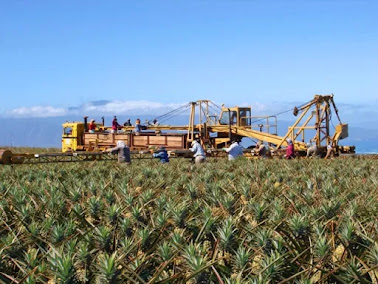Besides being able to be processed into briquettes or in more detail, read here, pineapple plantation waste can also be used for electricity and biochar production. The use of biochar on pineapple plantation land will increase fertility and improve soil quality so that it will also increase the productivity of the pineapple fruit. The use of biochar on dry land such as pineapple plantations will be more effective so that the benefits will be even more real. Biochar that can last up to hundreds of years in the soil will provide long-term benefits for pineapple plantation owners. The era in the future that tends towards efficient agriculture or precision agriculture will also produce less waste or even zero waste. Agricultural wastes that have been a lot of environmental problems will be reduced and processed into added value, environmentally friendly and sustainable materials such as biochar production.
In large pineapple plantations, the amount of pineapple waste produced is also large. Besides producing biochar, pyrolysis of pineapple waste will also generate electricity. Electricity as a form of energy that is easily converted to various other forms of energy is certainly very useful, especially the pineapple industry. Pineapple processing can use the electricity generated, thereby reducing or even eliminating the need for external electricity. But it is possible that if the pineapple industry needs heat more than electricity, the excess energy from pyrolysis does not need to be converted into electricity but only heat is enough and this is easier and simpler. Of course, these things also further reduce the production costs of these pineapple-based products, thus providing even greater profit.
There are many products from the pineapple industry, including candied pineapple, pineapple jam, pineapple paste, pineapple chips, pineapple juice, pineapple juice probiotics, pineapple jelly, canned pineapple, and dried fruit. As one fruit that is quite popular throughout the world, the demand for pineapple is also increasing. With the prediction of the world's population reaching nearly 10 billion by 2050, the need for food, especially fruit, will also increase. Pineapple peels are also commonly used as animal feed, especially cattle, and cow dung is used for biogas production. The addition of biochar to cow dung for biogas will increase biogas production, more details can be read here and the sideproduct in the form of digestate which is then composted will be of better quality in the presence of biochar. Biochar makes the nutrients in compost not easy washed but is released slowly (slow release fertilizer).







Nice project
ReplyDeleteHello i find your blog really interesting...its amazingly written
ReplyDeleteI want you to please check my given links below for your better taste and healthy foodstuffs.
Egypt Health Foodstuffs
Natural Sweeteners For Health
Healthy Food For Athlets
Online Healthy Food Market
Thank you for sharing this information
ReplyDeleteRENEWABLE ENERGY COMPANY IN UAE